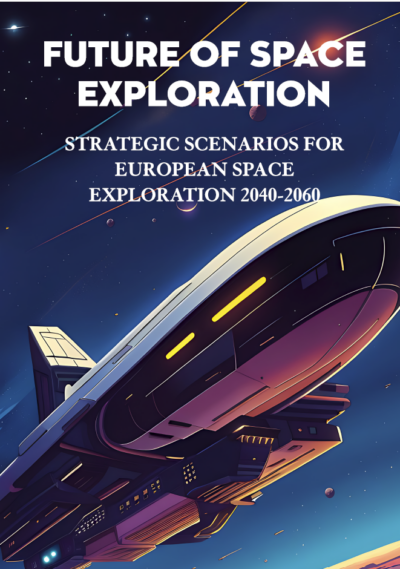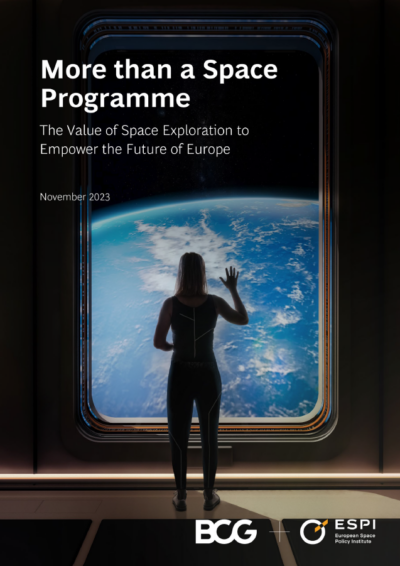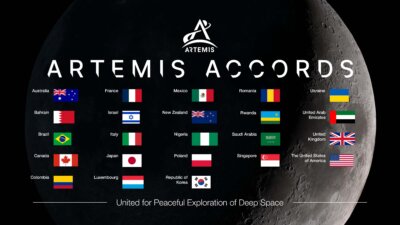ESPI Executive Brief No.21
On February 6th 2018, at Kennedy Space Centre in Cape Canaveral (Florida), the much awaited lift-off of Falcon Heavy from the iconic 39A launch pad – used for Apollo 11 – became the second biggest live stream in Youtube´s history with over 2.3 Million viewers. Falcon Heavy is reportedly the most powerful operational rocket by a factor of two. On board that behemoth, powered by 27 supersonic engines, Starman, a dummy wearing SpaceX´s new space suit, patiently waits for payload release in the driving seat of Elon Musk´s own car: a cherry red Tesla roadster. The latter was propelled into space within a matter of minutes and the adventures of Starman cruising through space toward deep space could be followed online for a good six hours, David Bowie´s Space Oddity playing in the background. Now, the roadster is expected to enter aheliocentric orbit, passing by the Asteroid Belt, the dwarf planet Ceres, and Mars – Elon´s ultimate goal, but well beyond its gravitational sphere of influence. Starman will not return anywhere near Earth before 2030, provided that the corrosion of solar radiation does not rip the vehicle to shreds. Officially renamed Near Earth Object-143205, the car has its own entry in NASA´s Horizons database of space objects. Musk thinks of it as future space archaeology but jury is still out on how long Starman will remain in people´s consciousness.However, the remarkable public enthusiasm for SpaceX´s exploits brings us back to the importance of narratives in space and to the development of these narratives in the New Space era.
1. Space narratives in the ´New Space´ era: between disruption and continuity
The relationship of humankind with space has always been a complex one. The way we project ourselves in outer space throughout history is very much tied to how we see ourselves. Therefore, the construction of a narrative around space endeavours is almost systematic and justifies them on cultural grounds. During the Space Race, narratives were used as sophisticated political tools to foster patriotism on both sides of the Pacific. Now that private companies are taking an increasingly prominent and visible role in space activities, we can observe that they are, also, eager to exploit the semiotics of space, adapting them for their own purposes.The use of space as a marketing tool is not new and has already been explored. A few examples of space branding can be tracked back to the 90s. In 1990, Tokyo Broadcasting System sent a journalist for $10 million dollars to the Russian Mir station and a logo of the company was displayed on the launch vehicle. In 1995, a Coca Cola dispenser flew on board the Space Shuttle Discovery. In 1996, Pepsi paid $5 million for a cosmonaut to float a replica of the soft drink can during an extra vernacular mission. In 2000, Pizza Hut paid $1 Million to have its logo displayed on a Proton rocket and had a pizza delivered to the ISS the next later.However, the impact of these marketing campaigns is watered down today by the reputation and influence of New Space actors within the general public.From a communication perspective, the staging of the Falcon Heavy launch was a true disruption in the way the space narrative was delivered. At the crossroad of marketing and ideology, Elon Musk tells a story thatconnects people to space activities and to the future steps of space exploration through an elaborated communication strategy, which:
• builds on references to both space history and popular culture and promotes a democratization of access to space and a progress in space exploration for the benefit of humankind;
• promotes tangible innovation: the footage of successes and failures instantly becomes marketingcontent, fostering a feeling of continued technological progress;“ESPI BRIEFS” No. 21 On the importance of narratives in outer space“ESPI Briefs” 21, March 2018
• leverages social media to engage directly with the general public (Elon Musk ranks among the top 100 most followed personalities on Twitter);
• delivers a brand story: Elon Musk himself is a brand, a ´self-made man´ living the American Dream, allegedly taking one high tech industry after the other, and enjoying a kind of ´cult following´ among technology enthusiasts.But, at the end of the day, how efficient is Elon Musk´s strategy? Some observers and financial stakeholders actually question the relevance of his marketing methods, notably for Tesla. Nevertheless, space-basedmarketing strikes a chord with the public, and the management of brand image is noticeably becoming moreimportant in the space sector. In catering for companies´ new needs in communication a handful of space marketing agencies already blossomed, such as Brand Delta V or Longbottom Communications. Among their most notorious clients, one can mention ArianeGroup, Immarsat, Intelsat, Nanoracks, and Lockheed Martin.
2. Making sense of the global space industry´s mutations
Curiously, the lack of official statements in reaction to the launch – apart from isolated comments on social media, notably from Lori Garver, former NASA deputy director, calling it a ´gimmick´ – underlined the puzzlement of the space community in front of its own transformations.Elon Musk´s marketing bet on winning public support at the expense of Wall Street´s appears to be a double-edged sword. Nevertheless, other rich entrepreneurs like Jeff Bezos have also gained agency in politics and influence on society by leveraging the prestige of their technologies to enter the conversation through an impactful and well mastered communication and PR strategy. In bankrolling that lavish marketing style they are able to display technological prowess and every effort to showcase US space superiority would certainly be welcome in Capitol Hill.If anything, the Falcon Heavy launch highlighted the potential of space marketing as it is today and, more importantly, gave us a glimpse at what it could look like in the future. Thriving towards inspirational communication remains a priority in the eyes of many European space stakeholders. Interestingly, inspiration was identified as a key component of ESA´s Space 4.0 Strategy presented at the last Council at the ministerial level of the agency. However, it seems highly unlikely that SpaceX´s communication strategy will serve as a model for Europe for various reasons: First, the very idea of sending a car into orbit, even European, would be met with vehement criticism as it would waste valuable payload space. As ESA DG Jan Wörner jokingly put it in a recent interview: had he proposed to do such thing, would he have been fired. Second, the European space programme makes little use of manned flights, even though it is rather obvious that the human dimension of that kind of mission is key to attracting the public interest from an inspirational and emotional standpoint. Reconnecting people with that special bond they have with space explains the great success of recent sci-fi blockbusters and Elon Musk followed the same logic to maximize the impact of what was just supposed to be the maiden flight of an automated launcher. Even ESA,in its highly successful communication campaign on Rosetta, personified Philae the robot to give the overall mission a relatable human face. Europe opted for a communication approach based on ´space is useful´ which is more appropriate to justify the good use of public funding but which also unfortunately leaves limited leeway for uplifting inspiration. In this respect, it will be interesting to see how the outlining of the European contribution to future international exploration missions and to what extent European policy makers will be sensitive to the strong appeal of such initiatives for the general public, although not solely based on a utility-oriented communication approach.




